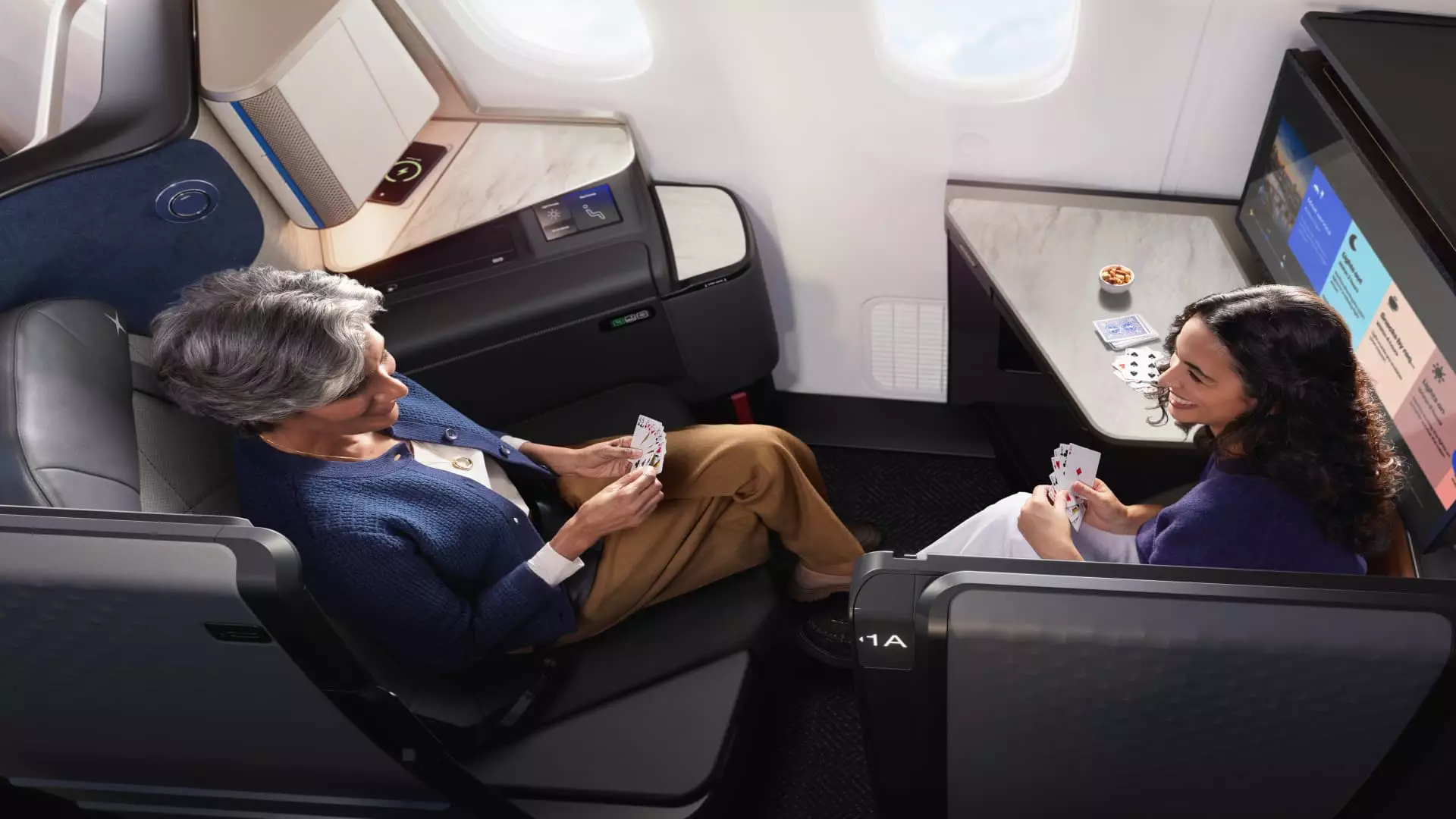In today’s competitive aviation landscape, U.S. airlines are engaged in a high-stakes gamble to redefine luxury in international business class. With each company flaunting its unique upgrades—American Airlines’ new “suites” featuring privacy doors and wireless charging stations, United Airlines’ Polaris Studio with expansive screens and watch-friendly ottomans—passengers are caught in a whirlwind of opulence. However, lurking beneath the glossy surface of gourmet meals and high-end entertainment systems is a stark reality: the soaring costs associated with these lavish travel experiences.
Flying in business class nowadays is less about mere transport and more about an extravagant lifestyle choice. Tickets can reach astronomical prices; a recent American Airlines business class ticket from Philadelphia to London went for $5,747, starkly contrasting with the mere $867 for a seat in economy. This 700% price discrepancy not only reflects the increasing divide between economic and business travel but also poses questions about the accessibility of air travel for the average consumer.
Innovation or Absurdity? The Upgrades Dilemma
The race to outdo competitors has led to increasingly elaborate designs and amenities in business class. Innovations like the sliding doors and “trinket trays” elevate the experience, yet one must ponder if this is mere excess disguised as necessity. Airlines are revamping business class cabins to encapsulate lavish amenities, all while attempting to differentiate themselves in a sector where service has become homogenized. Heather Garboden, American Airlines’ chief customer officer, stated that their goal is to optimize the business class section, particularly since many businesses restrict travel expenditures, hampering the future of first-class travel.
However, when these upgrades contribute to price hikes that only a select few can afford, one might argue that airlines are reshaping their markets to cater to the highest echelons of society rather than fostering inclusivity. For instance, the mention of premium offerings on every front—be it spacious seating, upscale dining, or luxurious bedding—turns the notion of air travel into an ostentatious show rather than an essential service.
Chasing Surfaces: The Economics Behind Luxurious Illusion
While wealthy individuals may remain insulated from economic downturns, the current trend signifies a larger systemic problem within the industry. With the airline sector facing high operational costs and thin profit margins—Delta boasting a mere 7.6% pretax margin while American languishes at a scant 2.1%—there is a clear panic among airlines to elevate the premium flying experience to ensure profitability. The growing reliance on luxury upgrades is not solely a strategy but rather a desperate bid for survival in a market riddled with uncertainties.
As air travel continues to rebound post-pandemic, airlines like American and United are banking on a perpetual demand for premium travel experiences, ignoring the very real struggles of the average traveler. Robert Mann’s observation that passengers are “splurging on better travel experiences” because the economy class experience is abysmal is both telling and troubling. It suggests a dangerous dichotomy: evolving luxury cabins exist as a direct consequence of neglecting passenger comfort in lower-cost options.
The Mirage of Authenticity: Can Corporations Tame Luxury?
As airlines chase the allure of premium offerings, there is a looming question regarding their authenticity. United’s introduction of caviar service in Polaris is a nod to the sophistication they are attempting to convey. However, such moves may come across as superficial pipe dreams that fail to recognize the evolving expectations of consumers. Rather than solely relying on high-end bric-a-brac, could airlines focus on enhancing fundamental aspects of the flying experience that truly matter?
Moreover, with lavish amenities often used as marketing tools, one has to wonder if these enhancements translate into a meaningful change for consumers. For many travelers, what matters isn’t the extravagance of caviar service or Bose headphones but the reliability, comfort, and honesty from the airlines they trust. As luxury becomes more accessible, will it also become more trivialized? Or, conversely, is the pressure to elevate the travel experience simply a reflection of the consumers’ unquenchable thirst for high-caliber escape?
This unique intersection of economics, class disparity, and experiences raises essential questions for the future of aviation. As airlines navigate these turbulent skies of economic uncertainty, we are left to contemplate: will the future of air travel be one of indulgence inaccessible to many, or a rebirth of genuine service that reconnects the industry with its core mission of transit for all?

